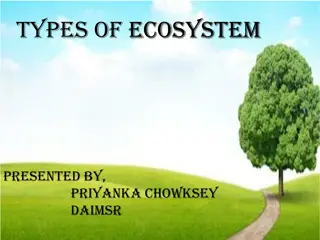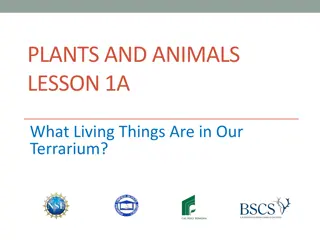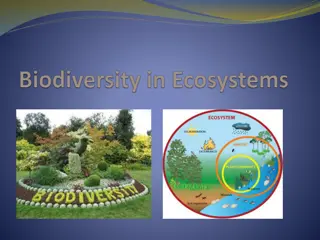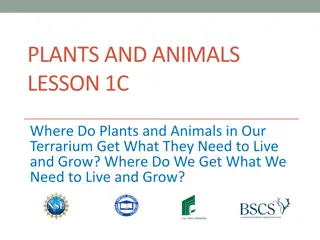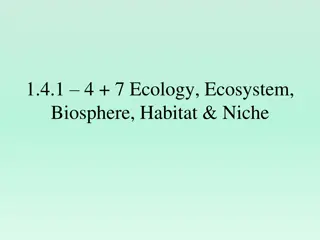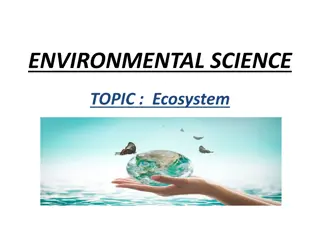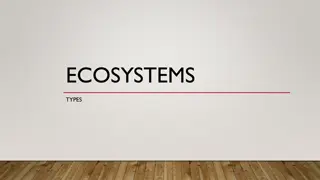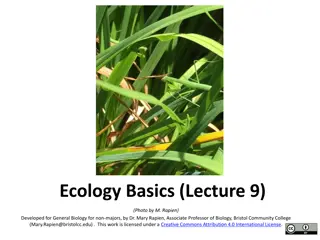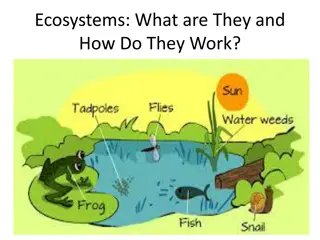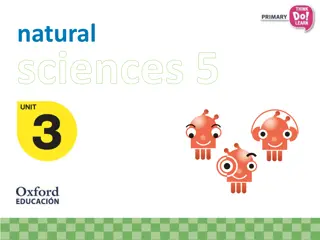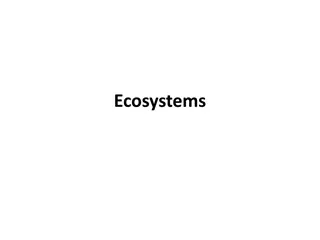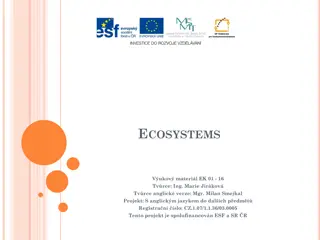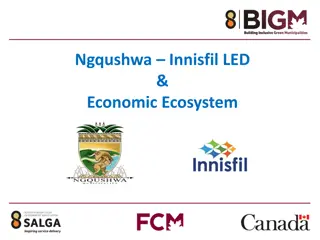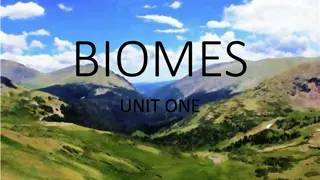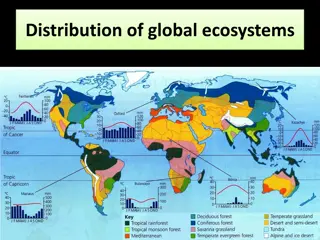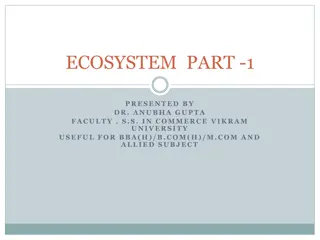Ecosystems: The Interplay of Living and Nonliving Elements
Ecology is the study of relationships within ecosystems, where living organisms interact with each other and their environment. Ecosystems range in size from the vast Sahara Desert to small puddles, influenced by abiotic factors like water, temperature, sunlight, and more. Maintaining balance is crucial for ecosystem health, with adaptations in plants and animals playing a key role.
Download Presentation

Please find below an Image/Link to download the presentation.
The content on the website is provided AS IS for your information and personal use only. It may not be sold, licensed, or shared on other websites without obtaining consent from the author.If you encounter any issues during the download, it is possible that the publisher has removed the file from their server.
You are allowed to download the files provided on this website for personal or commercial use, subject to the condition that they are used lawfully. All files are the property of their respective owners.
The content on the website is provided AS IS for your information and personal use only. It may not be sold, licensed, or shared on other websites without obtaining consent from the author.
E N D
Presentation Transcript
What is Ecology? Ecology is the study of relationships between living things and between living things and their environment.
What is an ecosystem? Ecosystem is a system of living things that interact with each other and with the physical world. A Biome is a collection of related ecosystems.
Main Ecosystems: Desert Rainforest Ocean Taiga Tundra Chaparral Grassland Temperate Forrest
Green:Grassland Purple: Taiga Orange:Tundra Black:Temperate Forrest Yellow:Desert Brown:Chapparal White:Ocean Click for full size
However.. An ecosystem can be as large as the Sahara Desert, or as small as a puddle!!! Ecosystems are more than just the organisms they contain. Geography,weather,climate and geologic factors also influence the interactions within an ecosystem.
Abiotic Factors Are nonliving physical factors of an environment. Abiotoic Factors include amount of water and oxygen, temperature, amount of sunlight and water pressure.
YOU TRY!!! YOU TRY!!! List three more examples of Abiotic Factors:
Biotic Factors Are the living, physical factors of an environment. Examples of Biotic Factors are parasitism, disease and predation.
Balance Ecosystems will fail if they do not remain in balance. No community can carry more organisms than its food, water and shelter can accommodate.
How do they stay balanced? To succeed in an ecosystem, plants and animals have special structures and behaviors called adaptations. Ex) Chameleon Polar Bear Can you think of more examples of adaptation?
This powerpoint was kindly donated to www.worldofteaching.com http://www.worldofteaching.com is home to over a thousand powerpoints submitted by teachers. This is a completely free site and requires no registration. Please visit and I hope it will help in your teaching.
This powerpoint was kindly donated to www.worldofteaching.com http://www.worldofteaching.com is home to over a thousand powerpoints submitted by teachers. This is a completely free site and requires no registration. Please visit and I hope it will help in your teaching.
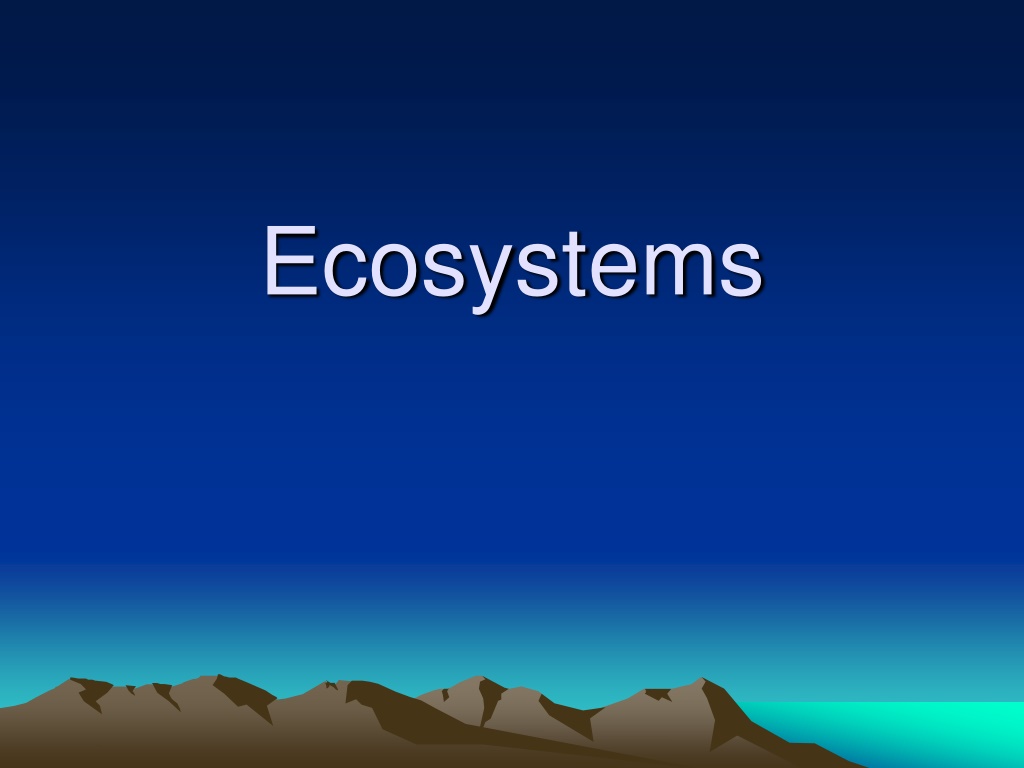
 undefined
undefined










